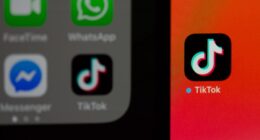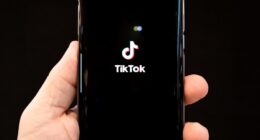Musicians more options than ever to interact with their fans and spread the word about their music in the current digital era. Email marketing is a valuable marketing tool that shouldn’t be disregarded, even with the rise in popularity of social media sites like Instagram and TikTok. Musicians can connect with their fans directly through email marketing, which also helps them develop lasting relationships and increase revenue. In this piece, we’ll examine the value of email marketing for musicians and emphasize the advantages of utilizing it for advertising. Creating an email list is one of the first steps in putting an effective email marketing strategy into action.
Key Takeaways
- Email marketing is a powerful tool for musicians to promote their music and engage with fans.
- Building a strong email list requires offering incentives and using various strategies such as social media and website sign-ups.
- Effective email campaigns should be personalized, visually appealing, and include clear calls to action.
- Segmenting your audience allows for targeted messaging and higher engagement rates.
- Compelling content in emails should include exclusive content, tour updates, and merchandise promotions.
People on an email list are those who voluntarily gave the musician their email address in order to receive news and updates. In order to reach their fans directly and increase the likelihood that they will view and interact with the content, musicians should build an email list. Artists can use a variety of techniques & methods to grow their email list. Offering fans enticements to join up is one successful tactic.
Discounts on merchandise or concert tickets are examples of exclusive content, along with never-before-heard songs or behind-the-scenes looks. In exchange for their email address, fans are more likely to sign up and join the musician’s email list when something of value is offered. The email list can also be promoted by making use of social media networks. On social media sites like Facebook & Instagram, musicians can share posts and stories that entice their fans to subscribe to their email list.
To reach a larger audience and encourage sign-ups, musicians can also use paid advertising on these platforms. Making successful email campaigns comes next for musicians who have built their email list. An email campaign that engages the reader, provides insightful content, & motivates action is considered successful. Musicians should be aware of a few dos & don’ts in order to accomplish this. Utilizing topic lines that grab attention is a crucial “do”. One of the most important factors in influencing an email recipient’s decision to open or not is the subject line, which appears first on the screen.
| Metrics | Description |
|---|---|
| Open Rate | The percentage of recipients who opened your email. |
| Click-Through Rate (CTR) | The percentage of recipients who clicked on a link within your email. |
| Conversion Rate | The percentage of recipients who completed a desired action, such as purchasing a product or signing up for a newsletter. |
| List Growth Rate | The rate at which your email list is growing, typically measured as a percentage. |
| Bounce Rate | The percentage of emails that were undeliverable and returned to the sender. |
| Unsubscribe Rate | The percentage of recipients who opted out of receiving future emails from you. |
Musicians ought to make an effort to write email subject lines that are succinct, captivating, and pertinent to the email’s content. However, there are a few “don’ts” that musicians should steer clear of when creating their email campaigns. For instance, “Exclusive Sneak Peek: New Music Coming Your Way!” would be a more attention-grabbing subject line than “Newsletter 3.”.
Using spammy language or excessive capitalization in the email’s subject line or body is a common mistake. When this happens, email providers may mark the email as spam and it may come across as unprofessional. It is important for musicians to make emails that are sincere, educational, and considerate of the recipient’s time.
In terms of email marketing, personalization is crucial. Musicians can increase the likelihood of engagement and conversion by customizing their messages to particular fan groups by segmenting their audience. An email list can be divided into groups based on engagement, behavior, and demographics. Demographic segmentation is the process of separating the email list according to attributes like gender, location, & age. This enables musicians to speak to particular fan bases with messages that are pertinent to them.
If a musician is organizing a tour, for instance, they can market the upcoming performances through emails sent to fans in particular cities or areas. Using a technique known as behavioral segmentation, fans’ actions—like buying merchandise or going to concerts—are used to segment the email list. Artists are able to send customized emails that are tailored to the individual interests and preferences of each audience segment based on behavior segmentation. For instance, a musician can email a fan who has previously bought merchandise about new releases or special discounts.
To engage fans & maintain their interest in the musician’s emails, one must create content that is compelling. Musicians can use a number of strategies to produce engaging content that connects with their listeners. In order to grab readers’ attention, images are essential. For maximum visual appeal, musicians should attach high-resolution photos, videos, and album artwork to their emails. Fans can have a memorable experience & the musician’s brand communicated with the help of visual content.
Second, storytelling is an effective technique for establishing an emotional connection with fans. Email is a useful tool for musicians to share behind-the-scenes tales, inspirations for their songs, and personal narratives. Musicians can establish a stronger bond with their fans and give them a sense of involvement in the journey by sharing these anecdotes.
A vital part of any musician’s career is promoting their music and increasing sales. One effective strategy for accomplishing these objectives is email marketing. To effectively use email marketing to promote their music and increase sales, musicians can adhere to a few guidelines. Giving fans on the email list access to special discounts or pre-orders is one successful tactic. Artists can encourage fans to buy their products by giving them exclusive deals that aren’t available to the general public.
Customers may find this exclusive, and it may also boost sales. Musicians can also utilize email campaigns to advertise new singles, albums, or music videos that are about to be released. When a musician releases new music, they can create buzz & boost sales by building anticipation and excitement among their fan base.
Developing a relationship with your fan base is essential to your long-term success as a musician. Email marketing offers a special chance to interact personally with followers & create deep connections. Artists can use email to interact with their fans and cultivate relationships in a number of ways. An efficient tactic is to solicit fan feedback.
Artists can ask their email list members for feedback on a range of music-related topics, such as song selections, album art, or live performance concepts, by sending surveys or polls. Artists can foster a sense of community and give fans a sense of value by allowing them to participate in the decision-making process. Answering emails right away is another crucial component of using email to develop relationships.
Email correspondence from fans should be acknowledged and promptly answered if the musician takes the time to do so. In addition to fostering a sense of trust & loyalty, this demonstrates to fans that their thoughts and feedback are valued. Email marketing campaigns must be measured in order to determine what is effective and what requires improvement. To determine whether their email campaigns are effective, musicians should monitor and assess a number of important metrics.
The open rate is a crucial metric that indicates the proportion of recipients who actually open the email. If the sender name and subject line were successful in drawing the recipients’ attention, the open rate would be high. To increase engagement, musicians may need to test out various subject lines or sender names if their open rate is low.
Click-through rate: This important metric calculates the proportion of recipients who click on an email link. The email’s content must have been interesting and convincing enough to compel action if there was a high click-through rate. When determining what kinds of content are most popular with their audience, musicians can monitor the click-through rate and modify their email campaigns going forward. Email marketing works best when combined with other music marketing techniques, even though it’s still a potent tool on its own. Artists can develop a unified and all-encompassing marketing plan that reaches fans via a variety of platforms by fusing email marketing, social media, and live performances.
Combining social media & email marketing is one successful tactic. Artists can encourage their fans to follow them on social media sites such as Facebook, Twitter, and Instagram by including links and social media icons in their emails. This keeps the personalized touch of email marketing while enabling musicians to interact more frequently and casually with their fans. In addition, email marketing is a useful tool for musicians to advertise live events like festivals, concerts, and album release parties.
Artists can create anticipation and boost live event attendance by sending customized emails to fans in particular areas. In order to reinforce exclusivity and reward their most devoted followers, they can also use email marketing to provide their email list with access to VIP packages or pre-sale tickets. To sum up, email marketing is an effective tool that artists can utilize to engage with their audience, showcase their music, and increase sales.
Musicians can advance their careers by developing an email list, creating email campaigns that work, personalizing messages, producing interesting content, & interacting with fans. Musicians can optimize the results of their email marketing campaigns and secure long-term success in the music business by tracking their progress, combining email marketing with other music marketing techniques, and putting this article’s advice into practice. they’ve
Looking to boost your music career through email marketing? Check out this informative article on Music Marketing Digital that provides valuable insights and tips for music artists. From building a strong email list to crafting engaging content, this article covers it all. Discover how email marketing can help you connect with your fans, promote your music, and increase your reach. Don’t miss out on this opportunity to take your music career to the next level. Read the full article here.
FAQs
What is email marketing for music artists?
Email marketing for music artists is a promotional strategy that involves sending emails to fans and subscribers to promote music releases, concerts, merchandise, and other related content.
Why is email marketing important for music artists?
Email marketing is important for music artists because it allows them to directly communicate with their fans and subscribers, build relationships, and promote their music and brand.
What are the benefits of email marketing for music artists?
The benefits of email marketing for music artists include increased fan engagement, higher ticket and merchandise sales, improved brand awareness, and the ability to track and analyze campaign performance.
How can music artists build an email list?
Music artists can build an email list by offering incentives such as exclusive content, early access to tickets, and discounts in exchange for email sign-ups. They can also promote their email list on social media and their website.
What should music artists include in their email campaigns?
Music artists should include relevant and engaging content in their email campaigns such as new music releases, upcoming concerts, behind-the-scenes footage, and exclusive merchandise. They should also include clear calls-to-action and visually appealing designs.
How often should music artists send emails to their subscribers?
Music artists should send emails to their subscribers on a regular basis, but not too frequently as to avoid overwhelming their audience. A good rule of thumb is to send one to two emails per month.
What are some email marketing tools for music artists?
Some email marketing tools for music artists include Mailchimp, Constant Contact, and Campaign Monitor. These tools offer features such as email templates, list management, and campaign analytics.









